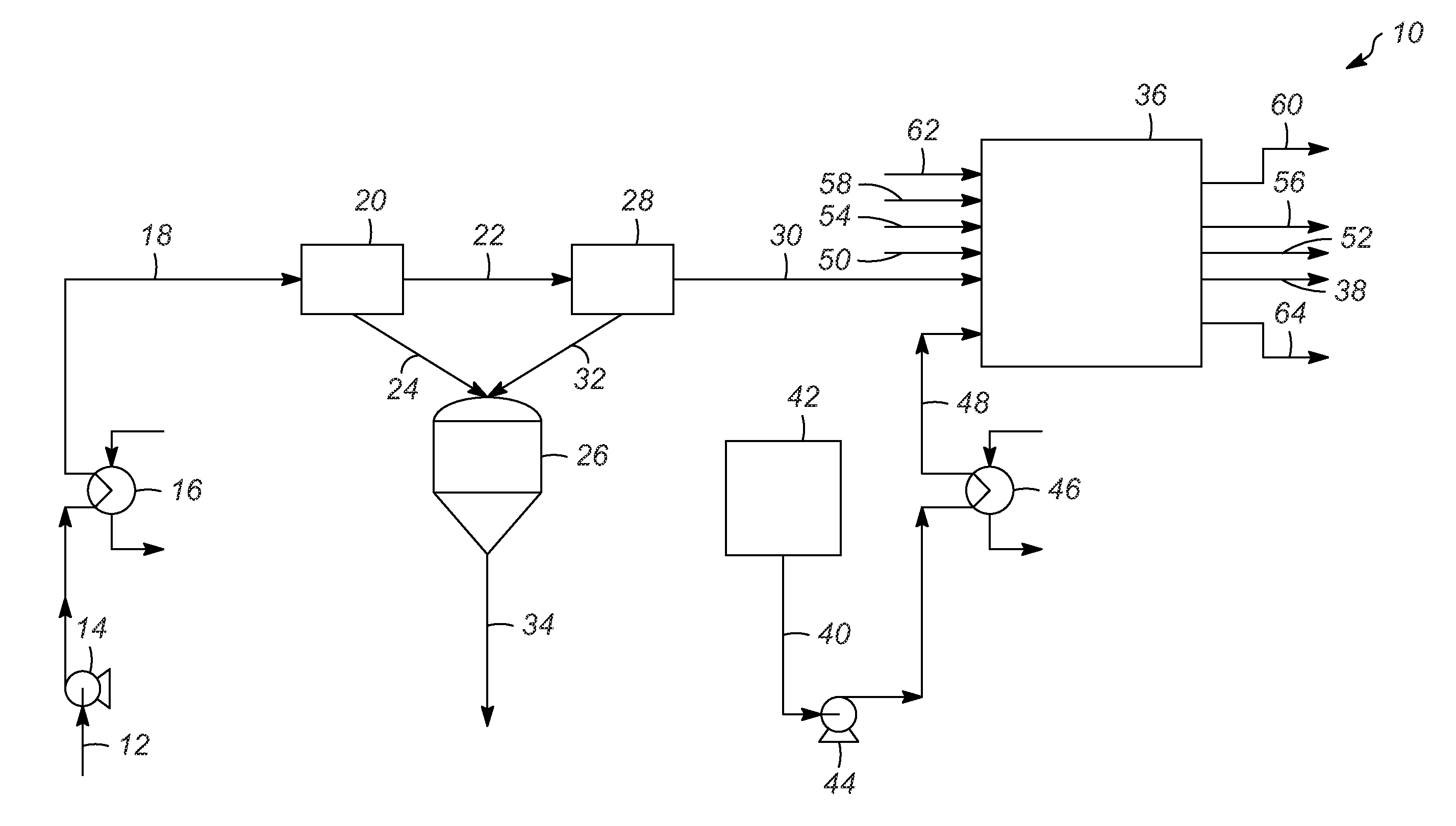Methods and apparatuses for forming low-metal biomass-derived pyrolysis oil
a biomass-derived pyrolysis oil, low-metal technology, applied in the direction of fuels, waste based fuels, chemical/physical processes, etc., can solve the problems of limiting the utilization of biomass-derived pyrolysis oils as biofuels, contaminated biomass-derived pyrolysis oils, complex nature of biomass-derived pyrolysis oils,
- Summary
- Abstract
- Description
- Claims
- Application Information
AI Technical Summary
Benefits of technology
Problems solved by technology
Method used
Image
Examples
Embodiment Construction
[0011]The following Detailed Description is merely exemplary in nature and is not intended to limit the invention or the application and uses of the invention. Furthermore, there is no intention to be bound by any theory presented in the preceding Background of the Invention or the following Detailed Description.
[0012]Various embodiments contemplated herein relate to methods and apparatuses for forming a biomass-derived pyrolysis oil having a relatively low metal concentration (hereinafter “low-metal biomass-derived pyrolysis oil”) from a solids- and metal-containing biomass-derived pyrolysis oil (hereinafter “biomass-derived pyrolysis oil” or “starting oil”). It should be appreciated that, while the treated oil described herein is referred to as a “low-metal biomass-derived pyrolysis oil,” a “low-metal biomass-derived pyrolysis oil” generally includes any biomass-derived pyrolysis oil treated to have a lower total metal concentration than the concentration of the total metals in th...
PUM
| Property | Measurement | Unit |
|---|---|---|
| pore diameter | aaaaa | aaaaa |
| pore diameter | aaaaa | aaaaa |
| temperature | aaaaa | aaaaa |
Abstract
Description
Claims
Application Information
 Login to View More
Login to View More - R&D
- Intellectual Property
- Life Sciences
- Materials
- Tech Scout
- Unparalleled Data Quality
- Higher Quality Content
- 60% Fewer Hallucinations
Browse by: Latest US Patents, China's latest patents, Technical Efficacy Thesaurus, Application Domain, Technology Topic, Popular Technical Reports.
© 2025 PatSnap. All rights reserved.Legal|Privacy policy|Modern Slavery Act Transparency Statement|Sitemap|About US| Contact US: help@patsnap.com


